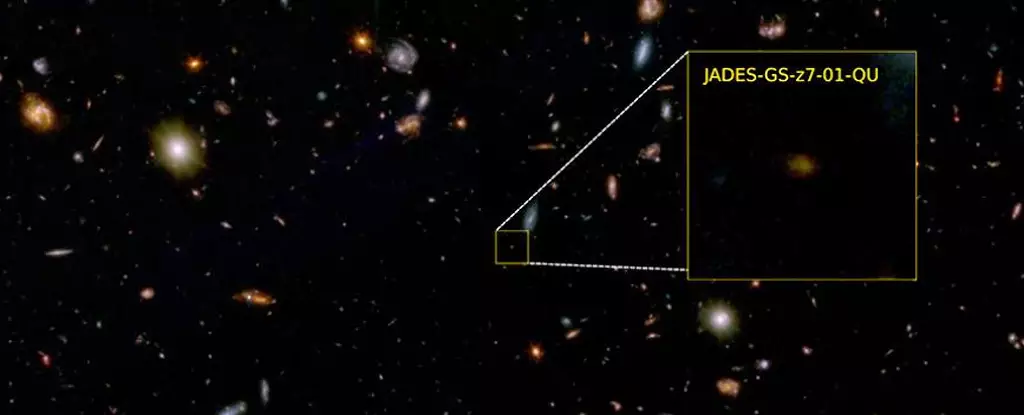The Universe experienced a very active phase in its early years, with gas clouds collapsing to form new stars. Galaxies required a rich supply of gas to continue star formation. However, when the galaxy JADES-GS-z7-01-QU was observed, there was little evidence of ongoing star formation. It appeared to be in a ‘quenched’ state, suggesting that star formation had started and abruptly stopped.
The sudden halt in star formation for JADES-GS-z7-01-QU was unexpected. Typically, galaxies stop forming stars later in the Universe due to factors like black holes. The galaxy experienced a period of intense star formation early on, which suddenly ceased. The reasons for this remain unclear, but it is speculated that the galaxy may have run out of gas, or a supermassive black hole at its core could have disrupted the star-forming process.
Galaxies in the Early Universe
In the early Universe, galaxies may have transitioned rapidly from star-forming to dormant states. This quick evolution suggests that the pace of galactic processes was much faster in the early Universe. Further observations using the James Webb Space Telescope (JWST) are needed to understand the phenomenon of star formation quenching in young galaxies better. Models based on the modern Universe may need revisions based on new observational data.
Astronomers are eager to explore other galaxies like JADES-GS-z7-01-QU to gain insights into why galaxies cease star formation. It is possible that galaxies in the early Universe experience periods of dormancy before resuming star formation. The periodic outflows of star material driven by black holes may explain temporary star formation halts in galaxies. It is crucial to study these ‘quenched’ galaxies in detail to understand their evolutionary history.
Future JWST observations will shed light on the behavior of galaxies in the early Universe. By studying a diverse range of galaxies, astronomers hope to uncover the mechanisms behind star formation quenching and subsequent reactivation. The discovery of more ‘quenched’ galaxies will provide valuable insights into the cosmic evolution of star-forming systems. Ultimately, the exploration of these galaxies will enhance our understanding of the ongoing processes that shape the Universe.


Leave a Reply